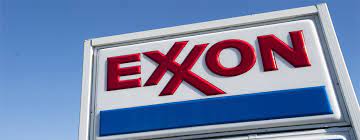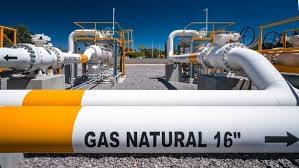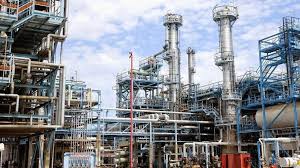Oil & Energy
‘Exxon’s Falling Production, Highly Bullish For Oil Prices’

Last week, ExxonMobil (NYSE:XOM) reported Q 2 2021 earnings in one of big oil’s most anticipated scorecards this earnings season. The United States’ largest oil and gas company posted stellar earnings that proved that the worst for the U.S. shale industry might finally be in the rear view mirror. Exxon’s Q2 earnings swung to a $4.7billion profit from a loss $1.1billion in the year-earlier quarter while revenues more than doubled to $67.7billion (+107.7 percent Y/Y), with both metrics exceeding Wall Street’s expectations.
Exxon said that its impressive earnings were driven by strong oil and natural gas demand as well as the best-ever quarterly chemical and lubricants contributions.
The company was able to achieve those results despite declining production: Q2 overall production slipped 2% Y/Y to 3.6million boe/day, despite production volumes in the Permian Basin jumping 34% Y/Y to 400K boe/day.
Exxon’s Q2 production clip marks the lowest level since the 1999 merger that created the oil and gas giant that we know today.
Meanwhile, H1 Capex clocked in at $6.9 billion, with full-year spending expected to come in at the lower end of its $16billion-$19billion guidance range.
Exxon says cash flow from operating activities of $9.7 billion was the highest in nearly three years and sufficient to cover capital investments, dividends, and pay down debt.
But persnickety shareholders appear unimpressed and have been bidding down XOM shares after the company failed to announce any share buyback program.
Whereas Chevron (NYSE:CVX), Shell (NYSE:RDS.A),and TotalEnergies (NYSE:TTE) all have announced a return to stock buybacks during the current earnings season, Exxon has opted to pay down debt rather than reward shareholders. Exxon suspended buybacks in 2016 as it went on one of the most aggressive shale expansions, particularly in the Permian.
WSJ Heard On The Street’s Jinjoo Lee says Exxon has less flexibility than its peers, thanks to years of overspending followed by a brutal 2020. This has left the company in a vulnerable position, and now Exxon has little choice but to lower its debt levels which have recently hit record highs.
CEO Darren Woods, has reassured investors that reinstating buybacks is “on the table,” though he has reiterated that “restoring the strength of our balance sheet, returning debt to levels consistent with a strong double-A rating” remains a top priority.
But overall, Exxon’s declining production is the way to go in this environment.
Energy finance analyst at IEEFA, Clark Williams-Derry,a non-profit organisation and Kathy Hipple, has told CNBC that there’s a “tremendous degree” of investor skepticism regarding the business models of oil and gas firms, thanks to the deepening climate crisis and the urgent need to pivot away from fossil fuels. Indeed, Williams-Derry says the market kind of likes it when oil companies shrink and aren’t going all out into new production but instead use the extra cash generated from improved commodity prices to pay down debt and reward investors.
Investors have been watching Exxon closely after the company lost three board seats to Engine No. 1, an activist hedge, in a stunning proxy campaign a few months ago. Engine No. 1 told the Financial Times that Exxon will need to cut fossil fuel production for the company to position itself for long-term success. “What we’re saying is, plan for a world where maybe the world doesn’t need your barrels,” Engine No.1 leader Charlie Penner told FT.
Better still, Exxon has been quickly ramping up production in the Permian, where it’s targeting a production clip of 1 million barrels per day at costs of as low as $15 per barrel, a level only seen in the giant oil fields of the Middle East. Exxon reported that production volumes in the Permian Basin jumped 34% Y/Y to 400K boe/day, and could hit its 1 million b/d target in less than five years.
After years of under performance amid weak earnings, the U.S. shale sector remains on track for one of its best years ever.
According to Rystad Energy, the U.S. shale industry is on course to set a significant milestone in 2021, with U.S. shale producers on track for a record-high hydrocarbon revenue of $195 billion before factoring in hedges in 2021 if WTI futures continue their strong run and average at $60 per barrel this year and natural gas and NGL prices remain steady. The previous record for pre-hedge revenues was $191 billion set in 2019.
Rystad Energy says that cash flows are likely to remain healthy due to another critical line item failing to keep up: Capital expenditure.
Shale drillers have a history of matching their capital spending to the strength of oil and gas prices. However, Big Oil is ditching the old playbook this time around.
Rystad says that whereas hydrocarbon sales, cash from operations, and EBITDA for tight oil producers are all likely to test new record highs if WTI averages at least $60 per barrel this year, capital expenditure will only see muted growth as many producers remain committed to maintaining operational discipline.
For years, ExxonMobil has been one of the most aggressive shale drillers with massive spending and capex. Luckily, the company is no longer too keen on maintaining that tag, which is bullish for the U.S. shale sector.
There are already growing fears that a full return of U.S. shale due to improved commodity prices could muddy the waters for everyone
According to an analysis by the authoritative Oxford Institute for Energy Studies, rising oil prices could allow for a significant return of US shale to the market in 2022, potentially upsetting the delicate re-balancing of the global oil market.
“As we enter 2022, the US shale response becomes a major source of uncertainty amid an uneven recovery across shale plays and players alike. As in previous cycles, US shale will remain a key factor shaping market outcomes,” Institute Director Bassam Fattouh and analyst Andre as Economist have said.
Obviously, many investors would prefer that this happens later rather than sooner and so far, indications are that this is the most likely trajectory.
By: Alex Kimani
Kimani writes for Oilprice.com
Oil & Energy
FG, MEMAN Chart Ways To Safe Petroleum Products Delivery

The Federal Government and key Petroleum Products marketers have proposed new measures to help curb rising cases of road accidents involving petrol tankers.
This followed recent incidents of road accidents resulting in cremation of hundreds of lives and causing extensive damage to properties.
Speaking at the Discourse organised by Mejor Energy Marketers Association of Nigeria (MEMAN) in Lagos, Thursday, with the theme “Improving Safe Transportation of Petroleum Products”, the Minister of State for Petroleum Resources (Oil), Heineken Lokpobiri, noted with dismay the number of casualties the country recorded recently due to tanker accidents.
Lokpobiri stressed the need for an enhanced training for tanker drivers, installation of detection leak devices as well as other safety systems that can assist drivers.
He called on Marketers and Federal Road Safety Commission (FRSC) to strengthen collaboration with stakeholders, especially in the training of tanker drivers.
On his part, the Minister of State for Petroleum Resources (Gas), Ekperikpo Ekpo, reaffirmed government’s commitment to providing enabling environment to ensure safety of petroleum products transportation.
Ekpo, who was represented by Engr. Abel, said consideration should be given to more safety means of transporting products like the pipelines and railway line.
He stressed the need for better training for drivers and implementation of safety regulations within the industry.
Earlier, Chairman, MEMAN, Huub Stokman, said the Association has elaborate training manual for members truck drivers.
Stokman insisted that more training programmes and consistent adherence to safety measures would help to curb road accidents involving tanker drivers.
Also speaking, the National President, Nigerian Association of Raod Transport Owners (NARTO), Yusuf Lawal Othman, called for support.
Oil & Energy
Benue To Pioneer Gas Production From Coal – NGEP

The Chairman, National Gas Expansion Programme (NGEP), Prof. Mohammed Ibrahim, has said that the production of coal bed methane, an unconventional form of natural gas extracted from coal, is set to begin in Benue State.
Prof. Ibrahim staed this while addressing newsmen at the end of a joint meeting of the National and State gas expansion committees with Benue State Governor, Hyacinth Alia.
He said the Federal Government is committed to expanding gas availability in Nigeria for domestic use and mobility.
Ibrahim added that extracting gas from unconventional coal sources rather than traditional hydrocarbon reserves is a way to boost gas availability.
“Essentially there are four areas of implementation that the committee has identified. One is to pioneer the production of gas from what you call coal bed methane, which means that Benue is going to pioneer in the country the production of gas not from conventional hydrocarbon, but from non-conventional coal just so that the nation will have an alternative source to gas availability”, he said.
Also speaking, the Chairman, Benue State Gas Expansion Programme, Dr. Emmanuel Chenge, said the gas expansion initiative would contribute to the economic transformation of Benue State.
“The good news is that Benue is set to join the league of gas-producing states and if we are conversant with what being a member of the gas-producing state is, it shows that Benue State will start getting derivatives from that sector of the economy”, Dr Chenge stated.
The National Gas Expansion Programme (NGEP) was established to boost the exploration and utilisation of gas in Nigeria and make Nigeria a gas-based industrial nation by increasing the use of gas for transportation, cooking, and industrialization.
Oil & Energy
NNPC Debunks Explosion Claim In Warri Refinery

The Nigeria National Petroleum Company Limited (NNPCL) has said there was no explosion at the newly refurbished Warri Refining and Petrochemical Company (WRPC).
NNPCL’s Chief Corporate Communications Officer, Olufemi Soneye, made this known in a statement issued on Friday night.
Soneye said reports claiming that there was an explosion at the Warri refinery were false and should be ignored and disregarded by the public.
According to him, the refinery was undergoing routine maintenance.
His statement read, “NNPC Ltd. wishes to clarify that there was no explosion at the Warri Refining and Petrochemical Company (WRPC). Any reports suggesting otherwise are completely false.
“On January 25, 2025, operations at WRPC Area 1 were intentionally curtailed to carry out necessary intervention works on select equipment, including field instruments that were impacting sustainable and steady operations.
“These intervention works are essential to ensure the production of on-specification finished and intermediate products, particularly Automotive Gas Oil (AGO) and Kerosene (Kero).
“The routine maintenance is progressing as planned, and Area 1 will be back in operation within the next few days.
“Despite ongoing interventions, over the past 11 days, AGO loading has been maintained at an average of eight trucks per day, with a sufficient supply available to sustain ongoing truck load-out operations”.
Soneye added that the NNPCL was committed to ensuring an uninterrupted supply of petroleum products from the refinery.
He said the company “appreciates the patience and cooperation of all stakeholders as it completes these essential maintenance activities”.
-

 Politics5 days ago
Politics5 days agoPDP Crisis: BoT Urges Immediate Swearing-In Of Ude-Okoye As National Secretary
-

 Politics2 days ago
Politics2 days agoAPC Chieftain Hails Tinubu For Sacking Suspended INEC RECs
-
Education2 days ago
New Book, Art Of Succession Unveiled In PH
-
Business5 days ago
PETROAN Accuses Crude Oil Producers Of Diverting 500,000bpd Refineries-Bound Product
-

 Sports2 days ago
Sports2 days agoLagos To Welcome International Athletes For Lagos City Marathon
-

 Oil & Energy2 days ago
Oil & Energy2 days agoFG, MEMAN Chart Ways To Safe Petroleum Products Delivery
-

 Niger Delta2 days ago
Niger Delta2 days agoNavy Arrests Nine Oil Thieves In A’Ibom
-
Sports5 days ago
W’Cup: Eagles Get Dates for Rwanda, Zimbabwe Qualifiers

